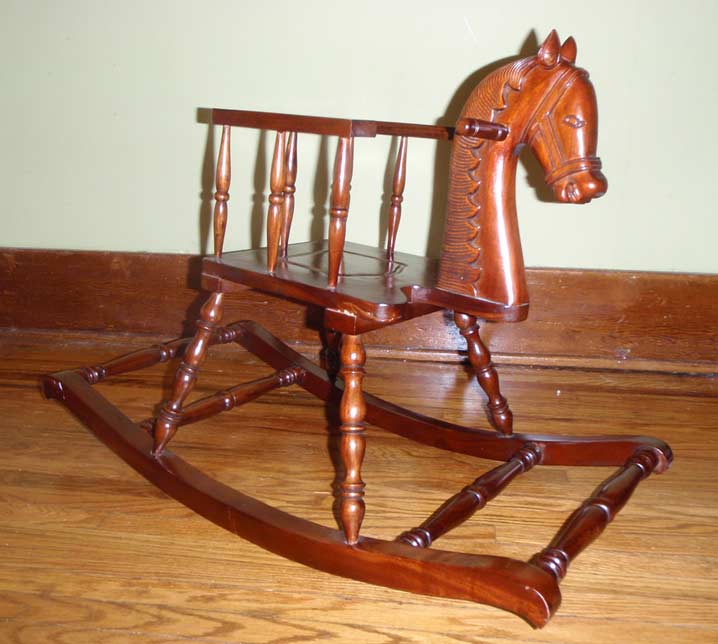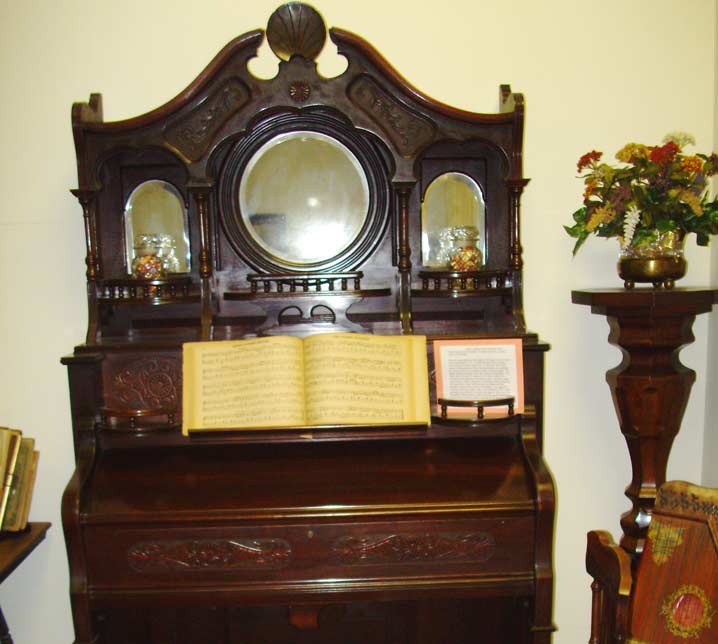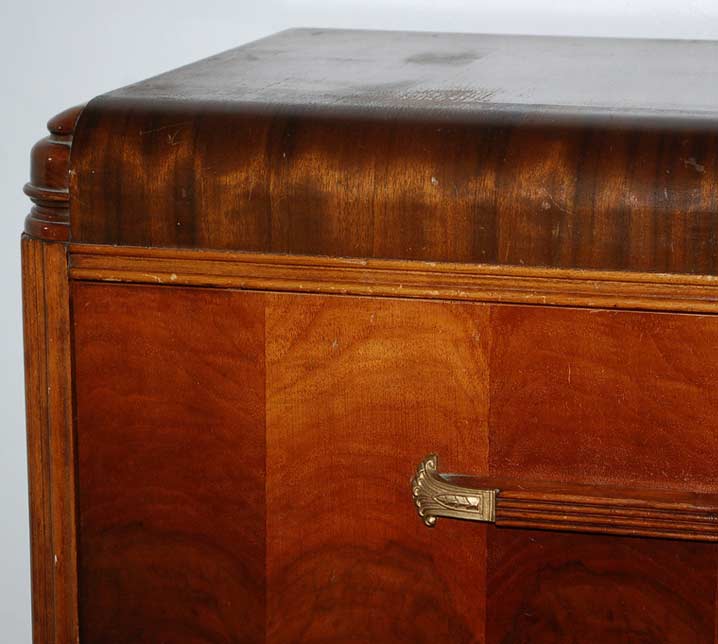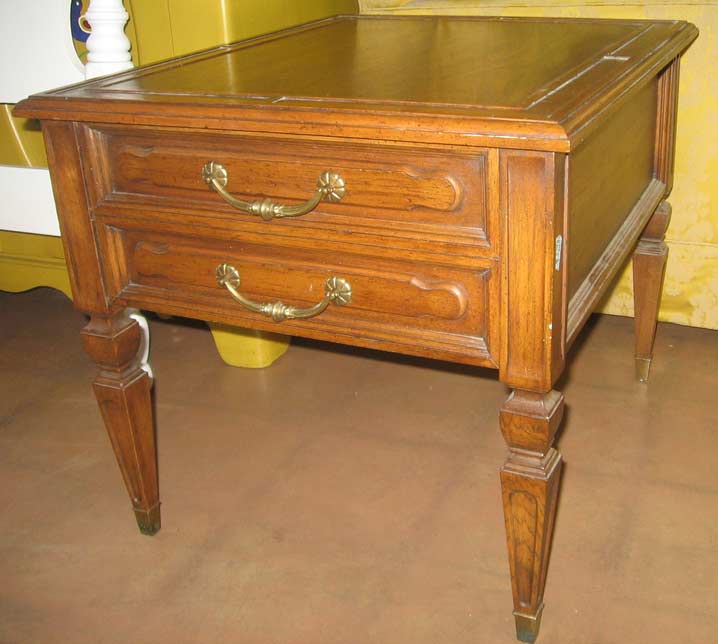
Identifying Fake Antiques
One who is familiar with antique furniture and has some knowledge of the periods to which they are linked, is better equipped to judge their authenticity. To one who is not so familiar, the pitfalls are legion. The inclusion of this topic is to give the newcomer some insight into the faker's methods of deception. The faking of antiques is not only a present day phenomenon, but dates back to the late 19th and early 20th Centuries in particular.
The chief source of materials during these times was Victorian furniture, from which was salvaged much useful timber for the purpose. By the time it came to the hands of copyists and fakers, the wood had already developed a welcome patina. This was due largely to the conscientious buffing and waxing by servants.
The chief source of materials during these times was Victorian furniture, from which was salvaged much useful timber for the purpose. By the time it came to the hands of copyists and fakers, the wood had already developed a welcome patina. This was due largely to the conscientious buffing and waxing by servants.
As Charles Hayward testifies, "From the carcasses of these disdained pieces, there arose some 18th Century cabinets, like the Phoenix, born anew. Victorian moulding sections, turnings, shapes and handles were ruthlessly cut away and replaced by details more in keeping with the period..." And he concludes, "It is an interesting thought that some of them may be the treasured possession of folk happy in the thought that they possess authentic work of the golden age of cabinetmaking."
Distinguishing Factors
There are numerous factors to consider in distinguishing a genuine item from a fake or made up one including:
- a piece's method of construction.
- The hardware placed on it, (eg. Handles, castors, locks).
- Veneers and timbers used.
- Decorative additions such as carving and marquetry inlay.
- The finish and overall appearance.
All the above features need to be true to the period from which the item originates. But when it is realised all are capable of being altered to create or simulate something resembling a period item, that problems arise.

Buyer Beware!
Machine Marks, especially on concealed surfaces, should ring alarm bells when viewed on a piece claiming to be early 19th Century, when only hand work was done. The faker has to reproduce these distress markings in cases where parts need replacing, or if he is remaking something entirely. In either instance, the end result needs to be convincing, but is sometimes made obvious by over distressing. Unnatural, repetitive indentations and purposeful scratches are a sure sign that something is amiss . These are often made by the same implement, and struck at a similar angle. It is well to observe the markings of so called "every day " use, for they can reveal much about a piece.
On closer inspection, this has led to many a startling discovery. For instance , from the conversion of a single Victorian walnut chiffonier there once emerged three separate items; a bow-front cabinet on scrolled legs, and two corner cupboards. Similarly, a large unsaleable press conveniently provided a chest of drawers from the lower section, already on its bracket feet; the cupboard above being mounted on a stand with cabriole legs added.
It would seem that the "marriage and divorce " of furniture parts operate for the expediency of saleability and value enhancement. Little regard then, is given to an unsuspecting buyer. Therefore buyer beware!
Reborn Antique Furniture
Before every purchase, the question should be asked, "did this piece start life as something else? " Yet another example recently came to hand in the form of an 18th Century tripod table with birdcage undercarriage and pie crust edge. First impressions indicated a well made table of good colour and form. Every feature appeared correct, right down to patina. However on closer inspection of the "faded " top, a faint circular cutter mark became evident. This was undoubtedly left by a router bit which had failed to be removed by the faker, its use being to cut the outline of the moulding's inner border. The top had been bleached to create the appearance of natural fade, even including ring marks from wine glasses to complete the deception.
On closer inspection, this has led to many a startling discovery. For instance , from the conversion of a single Victorian walnut chiffonier there once emerged three separate items; a bow-front cabinet on scrolled legs, and two corner cupboards. Similarly, a large unsaleable press conveniently provided a chest of drawers from the lower section, already on its bracket feet; the cupboard above being mounted on a stand with cabriole legs added.
Over 200 years of handling an authentic table of this kind, there develops on the underside of the top's edge, discolouration from continual use. Finger grease and dirt accumulate to form a patina of there own. In the above mentioned copy, this feature was simulated with stain, but not convincingly enough.
The problem is compounded by the fact that pieces such as this table have had fifty or more years of use to add to their already aged appearance , making it even more difficult to pick their lack of authenticity.
Numerous examples of alteration could be sited, particularly with regard to case furniture. Smaller decorative items are faker favoured. Pay close attention to knee-hole desks less than three feet wide, Pembroke tables, card tables, sets of shelves and corner cupboards. Apart from new wood, glued dust and simulated borer holes, there is another feature often overlooked by the faker- that of veneer thickness.
Veneer Thickness
18th Century veneers were sawn cut to a thickness no less than 1/8th of an inch, and were more a wood facing than veneer. They are often seen to have irregularities resulting from hand sawing, so after gluing and sanding, could vary in thickness from 1/16th to 3/16th of an inch.
Such veneer is seldom used on work that has been faked, mainly because sawn cut veneer is rare and expensive, and the faker won't be bothered to cut them from solid timber. On this basis alone, any piece claiming 18th or early 19th Century origins must possess thick veneer. Edges of drawers and tops- even panels can be easily inspected to confirm it.
The problem is compounded by the fact that pieces such as this table have had fifty or more years of use to add to their already aged appearance , making it even more difficult to pick their lack of authenticity.
So, if for instance an early Georgian chest or bookcase has modern, paper thin sliced veneers attached, then it's bound to be tampered with and don't touch it. As the 19th Century progressed, more accurate methods of veneer cutting were invented, so a uniform thickness of 1/16th of an inch was produced by the 1830's . After this time, even thinner veneers were in common use.
Suffice it to say that even a little understanding of period design and construction, combined with a keen eye for proportion, will enable one at least to make a better informed decision before purchasing any item.





